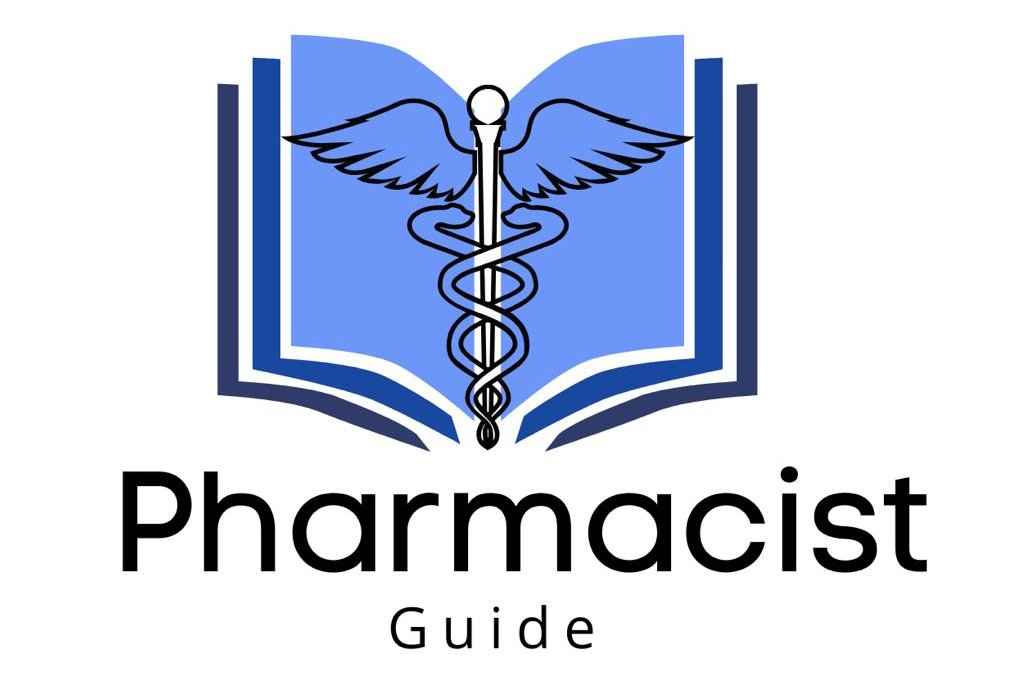Epilepsy is one of the most common chronic neurological disorders, affecting over 50 million people worldwide, according to the World Health Organization (WHO). It is characterized by recurrent seizures caused by abnormal bursts of electrical activity in the brain. These seizures can manifest in different forms, ranging from brief episodes of staring to full-body convulsions.
For pharmacists preparing for the OPRA (Overseas Pharmacists Readiness Assessment) exam, epilepsy is a high-yield topic that integrates knowledge from neuropharmacology, clinical pharmacy, therapeutics, and patient care. Questions often test not only the pharmacist’s knowledge of drugs but also their ability to analyze case scenarios, recommend appropriate treatments, and counsel patients effectively.
This guide provides an in-depth explanation of epilepsy, including its causes, types, diagnosis, treatment, and—most importantly—the role of pharmacists. By the end, you’ll understand why epilepsy is a must-study topic for OPRA success.
Key Takeaways
- Epilepsy is a chronic condition caused by recurrent seizures due to abnormal electrical brain activity.
- It affects people of all ages and demographics.
- Diagnosis involves patient history, EEG, neuroimaging, and lab tests.
- Treatment includes antiepileptic drugs (AEDs), surgery, lifestyle changes, and adjunct therapies.
- Pharmacists play a central role in dose adjustment, drug interaction monitoring, and patient education.
- For the OPRA exam, epilepsy questions are commonly found in the clinical pharmacy, neurology, and therapeutics sections.
What is Epilepsy?
Epilepsy is defined as a condition in which a person experiences two or more unprovoked seizures occurring more than 24 hours apart. A seizure occurs when groups of neurons in the brain send abnormal electrical signals, temporarily disturbing normal brain function.
The condition can present differently in each patient:
- Some may experience generalized tonic-clonic seizures (commonly known as “grand mal”), with loss of consciousness and muscle rigidity.
- Others may have absence seizures, appearing as brief episodes of staring or unresponsiveness.
- Many patients develop epilepsy without a known cause, highlighting its complex pathophysiology.
For OPRA candidates, it is essential to know that epilepsy is not just about seizure types—it is about understanding the entire therapeutic and clinical framework surrounding the condition.
Causes of Epilepsy
Epilepsy has multiple etiologies. Pharmacists must recognize these because the underlying cause often guides treatment decisions.
1. Genetic Causes
- Certain inherited syndromes (e.g., juvenile myoclonic epilepsy).
- Mutations affecting neuronal excitability.
2. Structural Brain Injuries
- Trauma from accidents or head injuries.
- Brain tumors.
- Congenital malformations like cortical dysplasia.
3. Metabolic Causes
- Hypoglycemia (low blood sugar).
- Electrolyte imbalances (e.g., sodium, calcium).
4. Infections
- Meningitis.
- Encephalitis.
- Neurocysticercosis (common in developing countries).
5. Idiopathic Cases
- Around 50% of epilepsy cases remain unexplained despite extensive testing.
Exam Tip: In OPRA clinical case questions, infections and trauma are commonly tested causes for epilepsy-related scenarios.
Types of Epilepsy
Understanding seizure classification is essential, both for diagnosis and for selecting the appropriate antiepileptic drug (AED).
- Generalized Epilepsy
- Affects both hemispheres of the brain.
- Includes tonic-clonic, absence, atonic, and myoclonic seizures.
- Focal (Partial) Epilepsy
- Originates in one part of the brain.
- It may be simple (no loss of consciousness) or complex (impaired awareness).
- Unclassified/Mixed Epilepsy
- Seizures that don’t fit neatly into focal or generalized categories.
- Seizures that don’t fit neatly into focal or generalized categories.
Clinical Relevance: AED choice depends on seizure type. For example:
- Absence seizures → Ethosuximide or Valproate.
- Focal seizures → Carbamazepine or Lamotrigine.
Diagnosis of Epilepsy
Accurate diagnosis is critical since many other conditions (e.g., fainting, migraines, panic attacks) may mimic seizures.
Common Diagnostic Methods:
- Patient History
- Detailed description of seizure episodes from the patient and witnesses.
- Detailed description of seizure episodes from the patient and witnesses.
- Electroencephalogram (EEG)
- Detects abnormal brain wave activity.
- Key diagnostic tool for epilepsy.
- Neuroimaging (MRI or CT scans)
- Identifies tumors, scarring, or malformations.
- Identifies tumors, scarring, or malformations.
- Blood Tests
- Helps identify metabolic or infectious causes.
- Helps identify metabolic or infectious causes.
OPRA Tip: Expect exam questions asking you to interpret diagnostic results in case studies. For example, “A patient has abnormal spike-and-wave activity on EEG; which seizure type is most likely?”
Treatment of Epilepsy
The ultimate goal of epilepsy treatment is to control seizures with minimal side effects, enabling patients to lead normal lives.
1. Pharmacological Management
Antiepileptic drugs (AEDs) are the mainstay of treatment.
Common AEDs to Remember:
- Phenytoin—effective for generalized tonic-clonic and focal seizures.
- Carbamazepine—commonly used for focal seizures.
- Valproate—a broad-spectrum AED used in generalized epilepsy.
- Ethosuximide—specifically used for absence seizures.
- Lamotrigine—widely used, favorable safety profile.
- Levetiracetam—increasingly popular due to fewer drug interactions.
- Topiramate, gabapentin, and pregabalin are used as adjunct therapies.
OPRA Focus Point: Pay special attention to drug interactions and side effects (e.g., valproate is contraindicated in pregnancy due to teratogenic effects).
2. Surgical Options
- Temporal lobectomy—a common surgery for drug-resistant focal epilepsy.
- Corpus callosotomy—reduces the spread of seizure activity.
3. Lifestyle Modifications
- Regular sleep routine.
- Avoid alcohol and recreational drugs.
- Stress management.
4. Adjunctive Therapies
- Ketogenic diet (high-fat, low-carbohydrate).
- Vagus nerve stimulation (VNS).
- Responsive neurostimulation devices.
Role of Pharmacists in Epilepsy Management
Pharmacists are essential healthcare providers in epilepsy care, especially in dose adjustment, therapeutic monitoring, and patient counseling.
Key Responsibilities:
- Dose Adjustment – titrating AEDs for maximum effect with minimal side effects.
- Drug Interaction Management—e.g., phenytoin induces CYP450, leading to reduced efficacy of oral contraceptives.
- Therapeutic Drug Monitoring—monitoring serum levels of medications such as phenytoin and valproate.
- Patient Education: The Importance of Adherence, Recognizing Triggers, and Managing Side Effects.
- Emergency Role—guiding on what to do during acute seizures (e.g., rectal diazepam in children).
👉 Exam Insight: Expect OPRA clinical scenarios like this: A 25-year-old woman with epilepsy is planning a pregnancy. Which AED should be avoided? → Answer: Valproate.
Clinical Case Example (For OPRA Practice)
Case: A 30-year-old man presents with recurrent seizures characterized by sudden loss of consciousness, convulsions, and post-ictal confusion. His MRI is normal, but his EEG shows generalized spike-and-wave discharges.
Question: Which antiepileptic drug would be most suitable as first-line therapy?
- A. Carbamazepine
- B. Valproate
- C. Phenytoin
- D. Ethosuximide
Answer: B. Valproate—because it is effective in generalized tonic-clonic seizures.
Conclusion
Epilepsy is more than just a neurological disorder—it is a major area of focus for international pharmacists preparing for the OPRA exam. From understanding causes and diagnosis to mastering AEDs and patient counseling, this topic integrates multiple disciplines of pharmacy practice.
With proper treatment, up to 70% of patients with epilepsy can live seizure-free. For OPRA candidates, mastering epilepsy ensures both exam readiness and the ability to contribute effectively to clinical patient care in real-world practice.
Frequently Asked Questions (FAQs) – Epilepsy & OPRA Exam Preparation
Epilepsy is a chronic neurological disorder characterized by recurrent seizures caused by abnormal electrical activity in the brain. It is a key OPRA topic because it integrates neuropharmacology, therapeutics, and clinical case analysis—skills essential for Australian pharmacy practice.
Causes include genetic mutations, structural brain injuries (e.g., trauma, tumors), metabolic disturbances, infections like meningitis, and idiopathic cases. Recognizing the cause helps pharmacists recommend appropriate treatments and anticipate drug responses.
The main types include generalized seizures (tonic-clonic, absence, myoclonic), focal (partial) seizures, and unclassified forms. Seizure classification guides AED selection—for example, ethosuximide is preferred for absence seizures, while carbamazepine is used for focal seizures.
Diagnosis involves patient history, EEG (to detect abnormal brain activity), neuroimaging (MRI/CT), and blood tests to identify underlying causes. Accurate diagnosis is crucial because other conditions like fainting or migraines can mimic seizures.
Key AEDs include phenytoin, carbamazepine, valproate, ethosuximide, lamotrigine, and levetiracetam. Candidates must understand indications, mechanisms, side effects, and interactions. For instance, valproate is contraindicated in pregnancy due to teratogenic risks.
Pharmacists are vital for dose adjustment, drug interaction management, therapeutic drug monitoring, and patient education. They also provide emergency guidance during seizures and counsel patients on lifestyle modifications and adherence strategies.
Yes. In addition to AEDs, options include surgery (e.g., temporal lobectomy), ketogenic diet, vagus nerve stimulation, and responsive neurostimulation. Lifestyle changes like adequate sleep and avoiding triggers significantly improve seizure control.
OPRA questions often present patient histories, EEG results, or drug profiles. Candidates must interpret data to recommend treatment. For example, “Which AED is first-line for generalized tonic-clonic seizures?” → Answer: Valproate.
Phenytoin and carbamazepine induce CYP450 enzymes, reducing the effectiveness of oral contraceptives and other medications. Pharmacists must monitor for such interactions and adjust therapy accordingly.
With proper treatment, around 70% of patients with epilepsy can live seizure-free lives. Pharmacist-led care, patient adherence, and individualized therapy significantly improve treatment outcomes.

